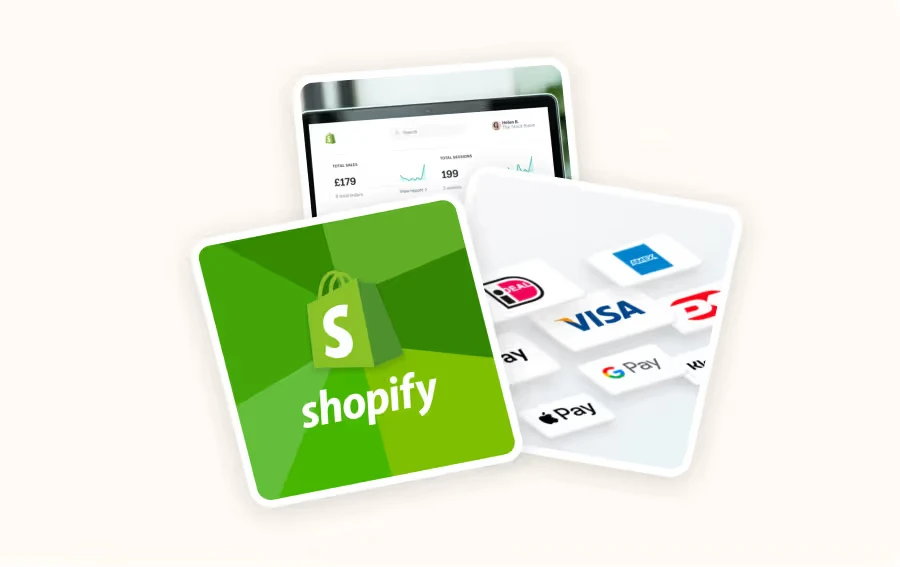Introduction: Why Shopify Payment Methods Matter
In e-commerce, a seamless Shopify checkout experience directly impacts conversion rates and customer trust. Selecting the right Shopify payment methods ensures lower cart abandonment, higher order completion, and smoother financial operations. This guide provides a comprehensive overview of Shopify payment gateways, including setup tips, comparison, and emerging trends in 2025.
Overview of Shopify Payment Options
Shopify offers multiple payment solutions:
- Shopify Payments
- Fully integrated with Shopify, available in supported regions.
- Advantages: low transaction fees, centralized reporting, PCI compliance.
- Limitation: regional restrictions.
- Third-Party Payment Gateways
- Examples: PayPal, Stripe, Authorize.net.
- Advantages: flexibility, advanced features like recurring billing, global availability.
- Limitation: setup complexity, higher fees in some cases.
- Manual / Offline Payment Methods
- Bank transfers, cash on delivery (COD).
- Useful for regions with low online payment adoption.
Comparative Analysis of Leading Shopify Payment Gateways
| Payment Gateway | Regions Supported | Transaction Fees | Advantages | Limitations |
| Shopify Payments | 20+ countries | 2.4%-2.9% + $0.30 | Fully integrated, low fees, PCI-compliant | Limited to supported regions |
| PayPal | Global | 2.9% + $0.30 | Trusted brand, fast setup | Redirects off-site, higher fees |
| Stripe | Global | 2.9% + $0.30 | Flexible API, supports subscriptions | Requires technical setup |
| Klarna / BNPL | US, EU, UK | Varies | Increases AOV & conversion | Limited regional adoption |
| Apple Pay / Google Pay | Supported regions | Standard card fees | One-tap mobile checkout, frictionless UX | Device dependent |
- Transaction Costs: Compare fees, currency conversion, and chargeback risks.
- User Experience: Seamless checkout improves conversion. Highlight mobile-friendly options like Apple Pay.
- Geographical Coverage: Ensure support for your target markets.
- Security & Compliance: PCI compliance, encryption, and fraud protection are mandatory.
- Integration & Reporting: Centralized dashboards simplify accounting and analytics.
Factors to Consider When Choosing a Payment Method
Emerging Shopify Payment Trends in 2025
- Buy Now, Pay Later (BNPL): Klarna, Afterpay, Affirm improve conversion rates and average order value.
- Digital Wallets: Apple Pay, Google Pay, Samsung Pay provide frictionless mobile checkout.
- Localized Payment Methods: iDEAL, Sofort, Alipay support international expansion.
- Cryptocurrency Payments: Accepting Bitcoin, Ethereum, or stablecoins via third-party integrations.
Best Practices for Optimizing Shopify Payments
- Enable Multiple Payment Options to reduce cart abandonment.
- Test Checkout Flow across devices for frictionless experience.
- Monitor Fees & Costs to optimize profitability.
- Display Trusted Payment Logos to increase customer trust.
- Stay Compliant with regional tax and security regulations.
Shopify Payments & Third-Party Gateway Setup
Shopify Payments Setup:
- Shopify Admin → Settings → Payments.
- Activate Shopify Payments and provide banking info.
- Enable supported credit cards and Apple Pay.
- Test a small transaction.
Third-Party Gateway Integration:
- Follow provider’s instructions (API keys, verification, plugin installation).
- Ensure proper reporting and reconciliation.
Conclusion
Optimizing Shopify payment methods is critical for professional merchants aiming to increase conversions, reduce cart abandonment, and enhance customer trust. While Shopify Payments offers simplicity and low fees, integrating third-party gateways, BNPL, and digital wallets provides flexibility and access to diverse customer segments. Staying updated on Shopify payment trends 2025, regional compliance, and emerging technologies ensures competitive advantage and growth.


